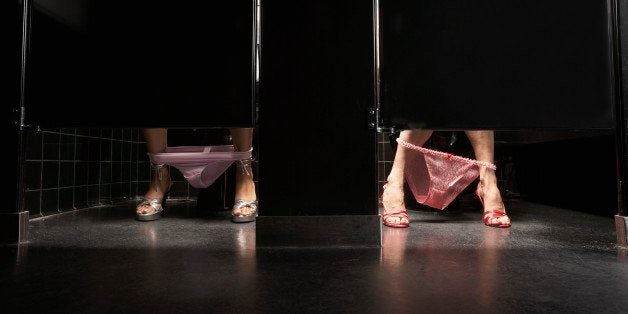
The passage of HB 2 in North Carolina in March ignited a national conversation about transgender bathroom access. On the one hand, transgender people have a deeply held gender identity that is not the one people would assume based upon their birth sex, and wish to use the bathroom that corresponds with who they are. On the other hand, some people express concerns about their and their children's safety if transgender people can use their preferred bathroom. To examine the latter point, here is a list of the things transgender people routinely do in the bathroom:
1. Open the door. It's fairly difficult to do anything in a bathroom if you're not in it. Thus, this is typically the first thing transgender people do in a bathroom, unless someone politely opens the door for them.
2. Walk toward a toilet. What do transgender people come into a bathroom for? Generally to go to the bathroom. A few may put on makeup or frantically try to get a stain out of their shirt, but really, the most common goal is to relieve oneself. The only thing getting in the way of that is a pesky line (thanks, sporting events and concert venues).
3. Use a toilet. Transwomen will find a stall, shut the door, and do #1 or #2. Transmen may do the same, or may use a device that allows them to pee into a urinal. And guys, you shouldn't mind if someone is using such a device, because if you're looking over at the genitals of the person at the next urinal, then the problem is with you.
4. Wash their hands. If not for washing hands, transgender people (actually, all people) would pose the threat of spreading infectious diseases. Thank goodness for soap and hot water!
5. Dry their hands off. Wet hands are no fun. Transgender people typically use a paper towel or an air drying machine to dry off their hands.
6. Leave the bathroom. After Steps 1-5, a transgender person will open the door, leave, and go on with the rest of their day.
This is what transgender people do in the bathroom every single day. In fact, you've probably shared a bathroom with a transgender person without knowing; it's that unremarkable.
There are health and safety implications to the national conversation about transgender bathroom rights, but these aren't about the threat of transgender people pissing and pooping in bathrooms congruent with their gender identity. Being wrongly labeled as bathroom predators or being denied access to appropriate bathroom facilities can lead to negative mental health outcomes. Prejudice, expectations of discrimination, and feeling unsafe all contribute to heightened rates of depression, anxiety, and substance use in transgender communities.
As a pertinent example, calls to Trans Lifeline, a transgender suicide hotline, nearly doubled after the passage of HB 2.
Suggesting that transgender people have ulterior motives when all they want to do is pee serves to stigmatize transgender people and trivialize who they are. That, unfortunately, is what poses a real threat to the safety of people in our communities.